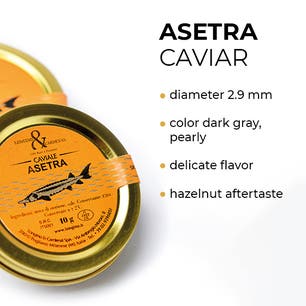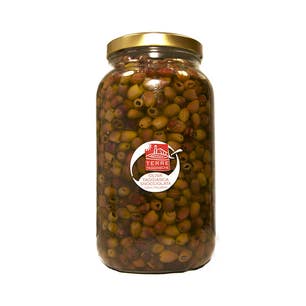Bluefin Tuna Fishing
BLUEFIN TUNA
Bluefin tuna fishing: from the sea to the table
Have you ever thought about how bluefin tuna gets to your plate? Today we are going to discover together the secrets of getting excellent quality tuna. Red tuna fishing has a long history, so deep-rooted that its origins are lost in the mists of time. This prized fish has always played a key role in Mediterranean coastal economies.
The fishing season can have a significant impact on the quality of bluefin tuna. For example, tuna caught in the summer generally has fattier and tastier meat. The size of the tuna can affect the quality of its meat. Usually, larger tuna have more valuable meat that is rich in flavor.
The best season for fishing bluefin tuna depends largely on the region. However, in general, summer months from June to September are considered the ideal time to fish for red tuna in the Mediterranean. During these months, bluefin tuna moves closer to the coast to spawn, making them more accessible to fishermen. Red tuna fishing in the summer also offers the advantage of a fattier, tastier meat that is highly prized by foodies. But let's not forget the importance of sustainable fishing: regardless of the season, it is critical to meet established fishing rules to preserve red tuna populations.
Remember, sustainability is the key to ensuring that future generations can enjoy this precious resource as much as we do. So as you prepare for your bluefin tuna recipe, make sure you are informed about the origin of the fish and its sustainable fishing.




Bluefin Tuna Fishing Techniques
Red tuna is a highly sought-after species, and several fishing techniques, each with its own peculiarities, are used to catch it.
- Trolling is one of the most widely used techniques for catching bluefin tuna. In this practice, the bait is towed behind a moving boat at a constant speed. The movement of the bait in the water attracts the tuna, which is then caught. Trolling is effective in open waters where bluefin tuna are most common.
- Spin fishing is a very dynamic and sport fishing technique. It requires a good level of experience and skill, as the equipment must be handled with care. Spinning fishing for bluefin tuna generally takes place from a moving boat and relies on the use of artificial lures that imitate small fish or squid, the tuna's natural prey.
- Longline fishing is a traditional technique used to catch bluefin tuna. It consists of using a long, floating or semi-floating line to which many baited hooks are attached. This technique allows fishing at different depths simultaneously and covering a large area.
- Seine fishing is an industrial technique that involves the use of a large purse seine net. The net is deployed around a school of tuna, then tightened and raised, trapping the fish. This technique is very efficient, but has raised concerns about its sustainability and its impact on other marine species.


Bluefin tuna and environmental impact: the rules for sustainable fishing
Regulation of the bluefin tuna fishing is a key element in ensuring the sustainability of the fishery and the protection of marine species. Several international organizations, such as ICCAT (International Commission for the Conservation of Atlantic Tunas) and the EU, impose strict rules for bluefin tuna fishing.
First of all, there are annual catch limits that vary by country and fishing boat size. These limits are set based on scientific estimates of the bluefin tuna population to ensure that fishing does not exceed the species' reproductive capacity.
In addition, the fishing techniques used must meet certain standards to minimize the impact on the marine ecosystem. For example, the use of purse seines, which can catch large quantities of bluefin tuna but also other species, is strictly regulated.
To ensure compliance with these rules, fishing activities are constantly monitored. Fishing boats must be equipped with satellite tracking devices, and catches must be documented and reported to the relevant authorities.
Finally, it is crucial to emphasize that the regulation of tuna fishing is not only about activities in the sea, but also about tuna trade. To prevent illegal trade, each lot of bluefin tuna must be accompanied by a legal catch certificate.


Between Spain, Malta and Tunisia: the fishing spots of the Fuentes Bluefin Tuna
Fuentes is a leading Spanish company in the bluefin tuna fishing industry. Traditionally, their fishing activities are concentrated in the Mediterranean Sea, particularly in the waters off the coast of Spain, in the Murcia region and Cadiz, but also in Malta, Tunisia, Morocco, Italy and Portugal. The company operates in compliance with international regulations for the conservation of fish species and is committed to sustainable fishing practices.
Bluefin tuna are surrounded by two kilometers of nets attached by 400 anchors to the seabed. After hours of travel, after dodging the jaws of killer whales off the coast, after descending the North Atlantic in search of the warm Mediterranean seabed where they were born, the tuna emerge in a beautiful Spanish landscape that is entirely sustainable. Here, divers catch tuna with precision and care. With a precise strike, the divers ensure an quick death that will prevent acidification of the flesh. There is no stress or rigor mortis to manage. At this point, the fish are placed on ice and in as little as two hours will be cut and frozen to leave for their recipients.
Discover the products and pairings
Longino & Cardenal
Longino & Cardenal stands today as one of Italy's leading "food globetrotters." With passion and courage it carries out a continuous search for the best raw materials, often little known to most, in order to meet the new trends in consumer behavior that seek excellent products proposed in innovative forms. Delivery of products is expected in 48/72 hours from the order if the product is already in stock. All our deliveries use specialized, refrigerated couriers.











